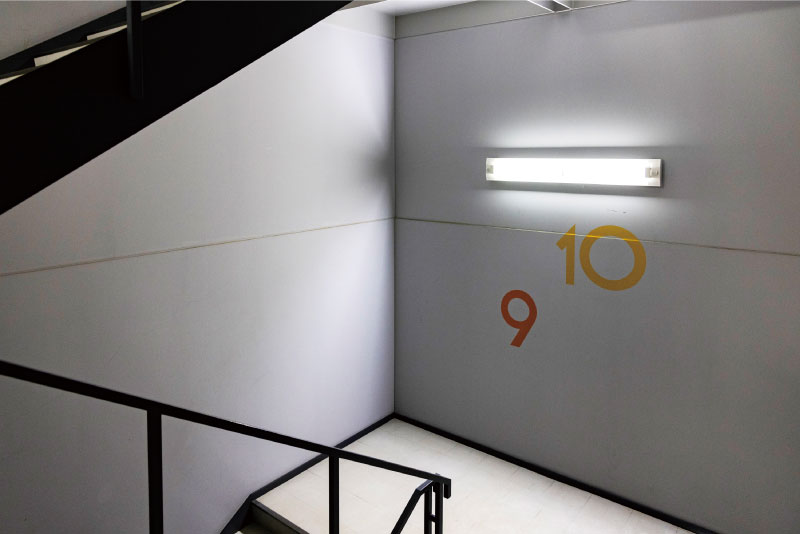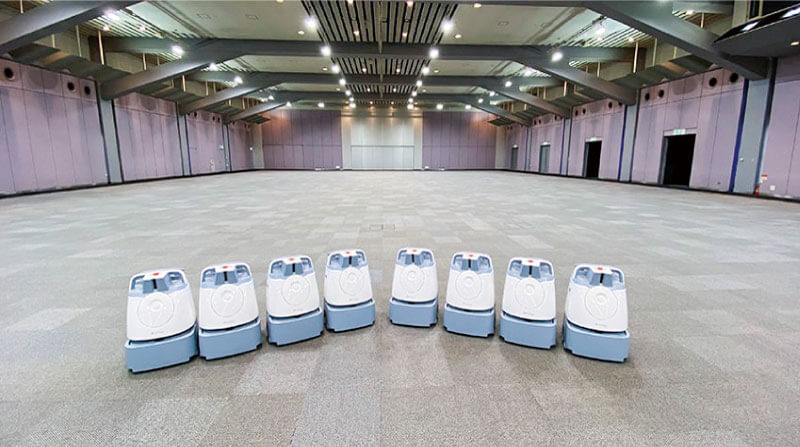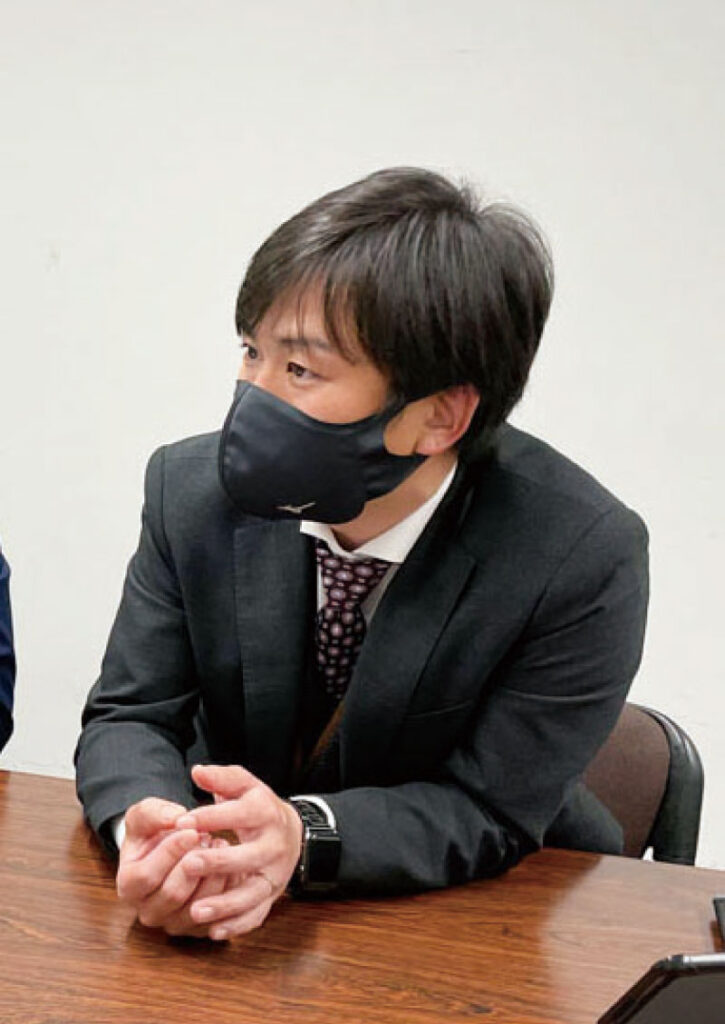The main purpose of the CO2 Subcommittee is to review the use of renewable energy and reduce electricity consumption to reduce carbon dioxide emissions. For this reason, we have also undertaken large-scale renovations of equipment such as energy-efficient LED lights and air conditioners. In addition, we have taken initiatives to reduce power consumption by using advanced technology, such as collaborating in robotics tests.
01 Equipment update
Renewal work for about 400 fan coil units have been completed (March)
Renewal work started in 2018. In fiscal 2020, 416 units have been updated
Renewal work started in 2018. In fiscal 2020, 416 units have been updated
LED lighting with a motion sensor installed on the emergency stairs. Lights up only when a person is detected, and LED lighting reduces power consumption.

ATC Hall’s LED renewal work has been completed (March)
With the completion of the Hall’s LED upgrade work, both power consumption and CO2 will be 1/3 of what they used to be.
02 Verification power saving of ATC Hall
At ATC Hall, we do power-saving testing during setup and dismantling. Up to now, we have only used downlights for energy-saving lighting, but as a result of our verification, we have switched to using LEDs (30% illuminance) instead of downlights, and the result is power consumption has been reduced by 21% while ensuring light. In the future, we will recommend this approach to organizers to reduce costs and improve customer satisfaction.
03 Introduction of renewable energy
In our fiscal-year power supplier selection criteria, we will assess carbon dioxide emissions and renewable energy adoption.
04 Experiment, test at ATC Hall
We support advanced robot testing experiments. One of them was a test using SoftBank Robotics’ cleaning robot at ATC Hall. Through this experiment, the cleaning time is shortened to 1/3 compared to humans, saving a lot of time.

05 SoftBank Robotics Cleaning Robot Introduction Seminar
An ATC hall representative took the podium at a seminar on the introduction of cleaning robots by Softbank Robotics, in which about 80 companies participated. As an example of contributing to the SDGs, we introduced a demonstration experiment of a cleaning robot.
FOCUS
In the background of many changes due to the spread of the Coronavirus pandemic, it is a very good experience for us to move towards Eco Action 21 certification. By launching a new initiative different from before, we were able to find good services to serve customers using the hall. Initially, the experiment of using robots to clean was to solve the problem of staff shortage, but the results showed that doing so also contributed to reducing CO2 emissions. In the coming time, we will also continue to develop new initiatives that are more beneficial to the environment.






